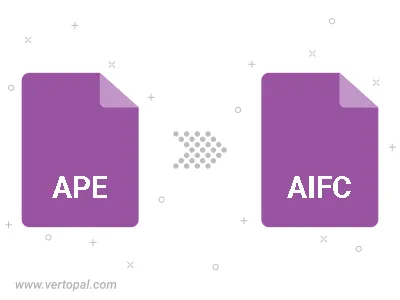Convert APE to AIFC
Convert APE audios to AIFC format, edit and optimize audios online and free.

The APE file extension, associated with Monkey's Audio, represents a lossless audio compression format designed to preserve original sound quality while reducing file size. Developed by Matthew T. Ashland in 2000, Monkey's Audio employs advanced algorithms to achieve efficient compression without data loss, making it a preferred choice for audiophiles and digital archiving. APE files support metadata tagging and are widely used in music production, storage, and distribution. While offering superior compression ratios compared to other lossless formats, they require specific software or plugins for playback due to limited native support across mainstream media players.
The AIFC file extension stands for Compressed Audio Interchange File Format, which is a variant of the AIFF (Audio Interchange File Format) used for storing audio data. Developed by Apple in the late 1980s, AIFC files incorporate compression to reduce file size while maintaining audio quality, making them suitable for professional audio applications. They support various compression codecs, such as ADPCM and MPEG-4, and are commonly used in digital audio workstations and multimedia software. AIFC files ensure high fidelity and compatibility across different platforms, enhancing audio storage and distribution efficiency.
Choose the APE audio you wish to convert.
Before clicking the Convert button, use any available APE to AIFC tools.
You will be redirected to the download page to see the conversion status and download your AIFC file.

Trim & cut APE and convert it to AIFC.
Convert APE to AIFC and set the output channels to Mono (1.0) or Stereo (2.0).
To change APE format to AIFC, upload your APE file to proceed to the preview page. Use any available tools if you want to edit and manipulate your APE file. Click on the convert button and wait for the convert to complete. Download the converted AIFC file afterward.
Follow steps below if you have installed Vertopal CLI on your macOS system.
cd to APE file location or include path to your input file.Follow steps below if you have installed Vertopal CLI on your Windows system.
cd to APE file location or include path to your input file.Follow steps below if you have installed Vertopal CLI on your Linux system.
cd to APE file location or include path to your input file.